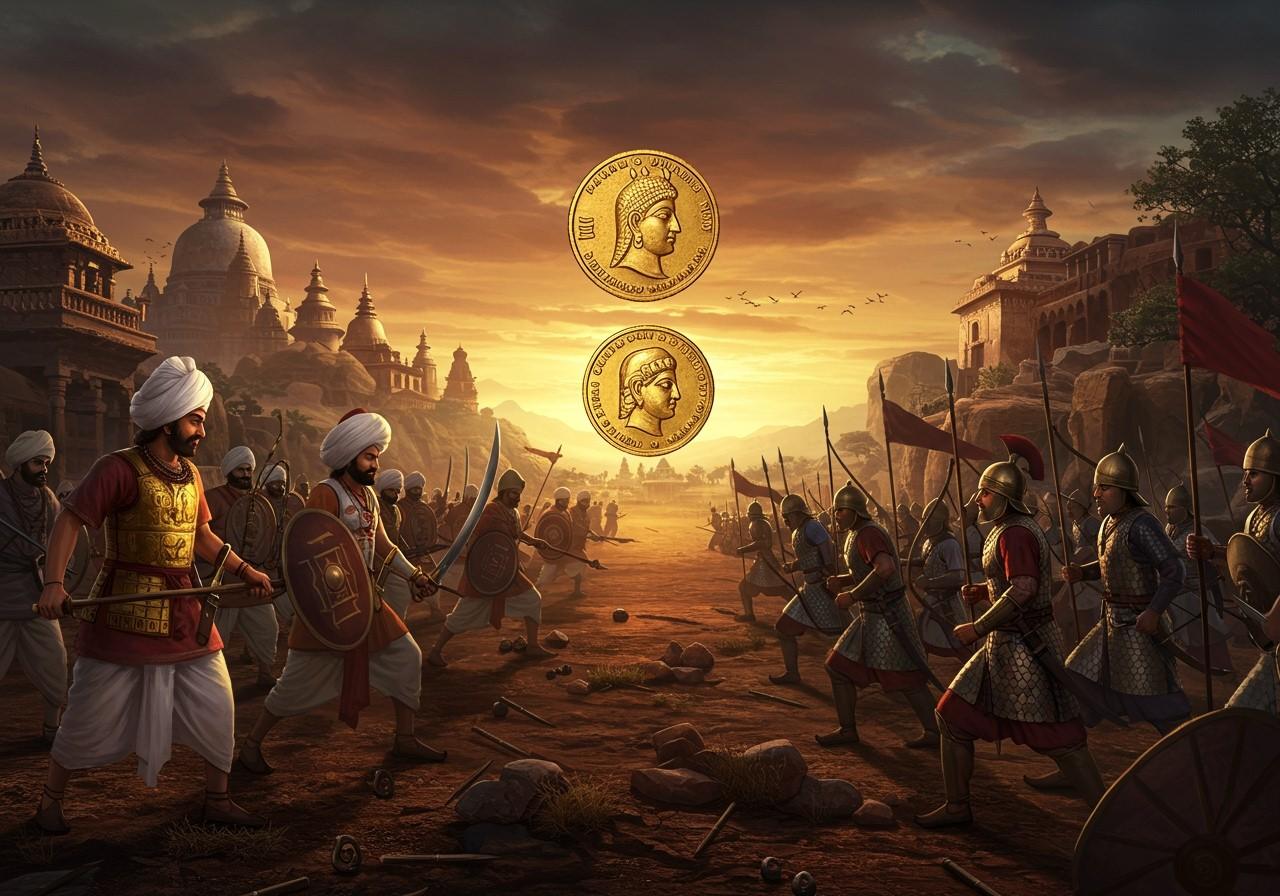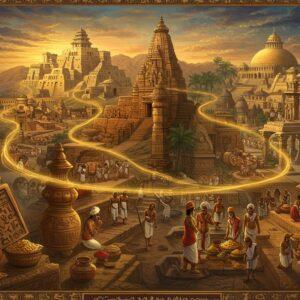
The Satavahanas and Western Kshatrapas were two prominent dynasties in ancient India. They significantly shaped the political, cultural, and economic landscape of the Indian subcontinent. This analysis explores their histories, territorial expansions, governance, cultural contributions, and eventual decline, offering valuable insights into India’s rich past.
Historical Background
The Satavahanas, also known as the Andhras, ruled parts of central and southern India from the late 2nd century BCE to the early 3rd century CE. They are renowned for their contributions to Indian culture, art, and architecture. The Western Kshatrapas, an Indo-Scythian dynasty, governed western and central India, including regions like Saurashtra, Malwa, and parts of modern-day Sindh, Gujarat, Maharashtra, Rajasthan, and Madhya Pradesh, from 35 to 415 CE. They are known for their distinctive coinage and the promotion of Buddhism and Jainism. Both dynasties emerged after the decline of the Mauryan Empire, filling the power vacuum in different regions.
Territorial Expansion and Governance
The Satavahanas initially held sway over the Deccan region, with their capital at Pratishthana (modern-day Paithan). Their territories expanded through military campaigns and strategic alliances, eventually encompassing parts of present-day Maharashtra, Telangana, Andhra Pradesh, and Karnataka. A centralized administration, with provincial governors overseeing different regions, characterized their rule.
The Western Kshatrapas established their dominion in western India, particularly Gujarat and Maharashtra, with Ujjain as their capital. Their governance structure leaned towards a feudal system, where local chieftains enjoyed considerable autonomy while acknowledging the Kshatrapa rulers’ sovereignty.
Cultural Contributions
The Satavahanas were patrons of art and architecture, constructing stupas, chaityas, and viharas, notably at Amaravati and Sanchi. Their patronage of Buddhism fostered the flourishing of Buddhist art and architecture. The Western Kshatrapas also made significant cultural contributions, particularly in numismatics. Their coins, often bearing bilingual inscriptions in Greek and Prakrit, offer glimpses into the socio-economic conditions of the time. They too supported Buddhism and Jainism, as evidenced by rock-cut caves and temples.
Economic Policies and Trade
The Satavahanas actively promoted trade and commerce within the Deccan region. They facilitated inland and coastal trade routes, connecting India with the Roman Empire and Southeast Asia. Their diverse coinage, including silver and lead coins, points to a thriving economy.
Similarly, the Western Kshatrapas nurtured trade in western India. Their strategic location along the coast facilitated maritime trade with Persia, the Roman Empire, and East Africa. The discovery of Roman coins in their territories underscores the extent of their trade networks.
Religious Policies and Patronage
Known for their religious tolerance, the Satavahanas supported Buddhism, Hinduism, and Jainism. They commissioned the construction of numerous stupas and supported Buddhist monasteries, which became centers of learning and pilgrimage.
The Western Kshatrapas also demonstrated significant support for Buddhism and Jainism. Inscriptions and rock-cut caves from their era reflect their inclusive religious policies, which contributed to the spread of these faiths in western India.
Decline and Legacy
The Satavahana decline commenced in the late 2nd century CE, triggered by internal strife, succession disputes, and external invasions. The Vakatakas and the Ikshvakus eventually absorbed their territories. Despite their downfall, the Satavahanas left an enduring legacy in art, architecture, and trade.
The Western Kshatrapas experienced a gradual decline due to conflicts with the Gupta Empire and internal rebellions. The Gupta ruler Chandragupta II ultimately overthrew them in the early 5th century CE. Their legacy persists in their numismatic contributions and the spread of Buddhism and Jainism.
Connecting to History through Poojn.in
At Poojn.in, we offer a wide selection of authentic puja items that connect you with India’s rich cultural heritage, including the fascinating era of the Satavahanas and Western Kshatrapas. Explore our collection to enhance your spiritual practices and connect with the divine.
-
Brass and Copper Idols: Discover beautifully crafted idols of various deities, perfect for creating a sacred space in your home. Explore our copper idols.
-
Puja Thalis and Accessories: Find traditional puja thalis and essential accessories for performing daily rituals and ceremonies. Browse our puja essentials.
-
Incense and Dhoop: Enhance your meditation and prayer with natural incense sticks and dhoop, creating a calming and spiritual atmosphere. Shop our incense collection.
Visit Poojn.in to explore our complete range of puja items and bring a touch of ancient India into your home.
Conclusion
The Satavahanas and Western Kshatrapas played pivotal roles in shaping India’s cultural, economic, and religious landscape. Their stories offer valuable insights into governance, cultural patronage, and trade. Studying these dynasties deepens our understanding of Indian civilization’s interconnectedness and evolution.
Exploring these historical figures is not merely an academic exercise; it’s about appreciating their enduring impact on the present. Their stories provide valuable lessons in governance, culture, and trade that remain relevant even today.
Frequently Asked Questions
What distinguished the Satavahanas and Western Kshatrapas? A key difference lies in their primary religious affiliations. While the Satavahanas embraced both Hinduism and Buddhism, the Western Kshatrapas showed a greater affinity for Indo-Scythian and Iranian traditions.
What significance does a map of the Western Kshatrapas hold? A map of the Western Kshatrapa kingdom is crucial for understanding their territorial extent and influence in western India. It visually represents their boundaries and the major cities under their control.
What were the Satavahanas’ main contributions? The Satavahanas enriched Indian culture through architecture, literature, and trade. Their construction of stupas and promotion of Buddhism are particularly noteworthy contributions.
What were the Western Kshatrapas’ main contributions? The Western Kshatrapas significantly contributed to trade and cultural exchange in western India, including minting coins and supporting local art and architecture.
How did the Satavahanas and Western Kshatrapas interact? The Satavahanas and Western Kshatrapas frequently clashed over control of trade routes and territories, resulting in numerous battles and shifting power dynamics.


